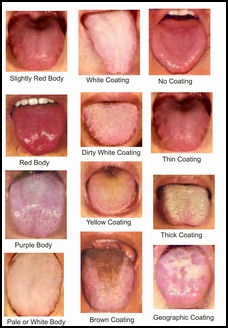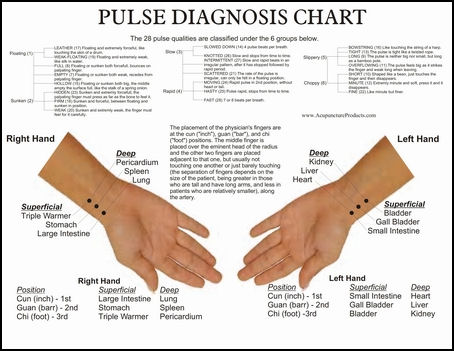by Walter Sorochan
Posted April 27, 2013. Disclaimer The information presented here is for informative and educational purposes only and is not intended as curative or prescriptive advice.
Health care in United States is under scrutiny by politicians and economists today for not just because it is expensive but also whether it is really helping to keep people healthy. Is Western medicine really serving its people? Healers and the medicine they practice are also being challenged by the patients they serve. This challenge is evident in where sick people go for help. More sick persons today are seeking help from unconventional medicine than from conventional medicine. Indeed, many patients combine Western and alternative medical practices, labeling this approach complementary alternative medicine [CAM].
Chinese has already integrated Western medicine into its Chinese medicine [ CM ]; although such practice may not be as effective as it should be. "Physicians in China have been cross-trained substantially in both disciplines. Many doctors in China are using both Western Medicine and Chinese Medicine in daily practice, sometimes utilizing both modalities, depending on the patient’s preference or condition." Yen: integrating Chinese medicine 2012 On the other hand, complementary alternative medicine and it's multidisciplinary approach acceptance of Eastern or Oriental medicine in United States today is in slow transition. The classic example is the integration of acupuncture by many Western trained medical doctors. Brisbane: UCLA conference 2004 This raises the question : "What is the difference between Western and Eastern medicine? This is the jest of this article.
The table below compares the numerous aspects of both health care systems:
diagnoses and acts upon the energy
that creates the disease state. diagnoses and acts upon the energy that creates the disease
state. exists in the physical realm: Need to see it e.g. chemical equation or microscope,
X-rays
Comparison item Eastern Western Medical description Traditional
Chinese Medicine [TCM], Oriental, unconventional,
alternative, Natural treatment/therapy, Complementary Chinese
Alternative Medicine [ CAM ]
Conventional, allopathic,
Complementary Alternative medicine [ CAM ]Health view Holistic: balance of energy forces
Health is a balance between mind, body, and
spirit. Health is an ongoing process of maintaining
balance and harmony in the circulation of qi.
Less holistic;
Health is absence of disease, pain, defect, or symptoms of illness Disease perception Disease is believed to be related to an imbalance in the
inside doshas
[ balance of the humors ].Disease is believed to be caused primarily by viruses, bacteria and nutrition imbalance-in other words, outside influences
Bio-energy Qi or chi, prana, life force none Bio-energy therapy Acupuncture [ channels
of energy flow ] do not believe in bio-energy Cause of illness cause is quite simply a
stagnation of the flow of Qi energy; unbalanced life force
foreign microorganisms, defective tissue, ideopathic or cause unknown Symptom interpretation body's way of
showing that body is healing itself manifestation of disease Therapy concept Prevention; promote health
and treat cause of disease Treatment;
suppress symptoms Treatment modality Treat Cause
multiple [ physical, mental ], total body; treat the disease by determining
the root causes, resolving them before finally stopping the symptoms
Treat symptoms & ignore causes;
single cause, suppress pain, drug medicationDiagnostic measures use Human senses: pulse,
tongue, eyes, coloring; analyses body energy use Diagnostic lab tests Mind-body-spirit one separate Iatrogenic Illness (physician caused)
almost non-existent 4th leading cause of death, harms millions Strength Lifestyle causes illness handling
trauma; surgery Yang-Yin
Treatment ideologyYang-Yin complementary
Yang treat energy inside
cells and bodyYin outside
treat outside cells, blood and chemicals Variety of therapies acupuncture, martial
arts, herbal medicine, massage such as Shiatsu. Additional
therapies may include nutrition or diet, and lifestyle counseling
drugs for pain, surgery, Cost Inexpensive Very expensive Reality
Side effects few many Role of doctor Assistant; help people stay
well mechanic; fix what is broken and find things that are
wrong Individualized treatment Practitioners
traditionally used four methods to evaluate a patient’s condition:
observing (especially the tongue), hearing/smelling,
asking/interviewing, and touching/palpating (especially the pulse).
Same pill for all;
one therapy fits allResponsibility Patient Therapist Efficiency focus on
basic primary care—an approach that is very cost effective focus
on expensive specialty
care;
inadequate when it comes to treatment of chronic degenerative diseases
and lifestyle-induced illnesses.
Source: Table compiled from references
Illustrations of two Chinese medical methods to evaluate a patient:
Tongue evaluation: |
 |
For more health care system information go to Health care reform
Feedback about information on this web-site: E-mail author
References:
Adagem Kim, "Seniors Use Alternative Medicine, but Don't Talk About It," Yahoo Voices, January 30, 2007. Adagem: seniors use Alt med 2007
Brisbane Frances, "Landmark Conference Builds Bridges Between TCM and Western Medicine," Acupuncture Today. February, 2004, Vol. 05, Issue 02. Brisbane: UCLA conference 2004
Hays Jeffrey, "Health care in China today," Facts and Details, November 2012. Hays: China Health care today 2012
Hays Jeffrey, "Traditional Chinese medicine," Facts and Details, 2008, Last updated July 2012. Hays: Chinese medicine 2012
Mokaila Aone, "Traditional vs. Western Medicine - African Context," Drury University [Springfield, Il], December 08, 2011. Mokaila: Traditional medicine Africa 2011
National Center for Complementary and Alternative Medicine (N C C A M): Part of the National Institutes of Health, "Traditional Chinese Medicine: An Introduction," June 2010. US NIH: Comp Medicine 2010
According to the 2007 National Health Interview Survey, which included questions on the use of various CAM therapies, an estimated 3.1 million U.S. adults had used acupuncture in the previous year. US NIH: Comp Medicine 2010
Sentman C. Wade, "Western Medicine Proves to Be Inadequate Compared to Eastern Medicine," YahooVoices, June 18, 2009. Eastern Medicine Looks at the Big Picture, Instead of Merely Addressing Symptoms Sentman: diff meds 2009
Stone Al, "Western and Eastern Medicine compared," Gancao.net, November 30, 2009. Stone: West-East Medicine 2009
Stress Solutions: StressSolutions: Table comps
Wright Daniel, "Ancient Eastern Medicine in Modern Western Times," YahooVoices, July 2, 2007. Wright: Ancient vs wetern times 2007
Yen Wong Emily, Barak Gaster and Sum Ping Lee, "East meets West: current issues relevant to integrating Chinese medicine," Chinese Medicine, September 3, 2012. Yen: integrating Chinese medicine 2012